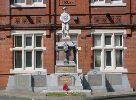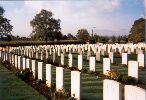
Newton-le-Willows and
Earlestown War Memorial

| OTHER WARS |
 |
Newton-le-Willows andEarlestown War Memorial |
 |
| The
Great War Roll of Honour |
|||||||||||||||||||||||||

Private Barrow was the son of Geoffrey Barrow of Dean Dam, Golborne,
Newton-le-Willows. The NEG report published on 21st February 1919 was very brief
and simply stated that Harry had been missing in Salonika since September. It
added that prior to enlisting four years earlier at the age of 17, he had worked
at the Vulcan.
Harry’s name is on the Dorian
Memorial which is situated in the north of Greece. It is on what was called
Colonial Hill overlooking Lake Dorian.
The CWGC site gives this comment about this front:
“The Memorial is roughly in the centre of the line occupied for two years
by the Allied troops in Macedonia, but close to the West end of the British
part of this line. It marks the scene of the fierce fighting in 1917-1918, in
which the majority of British casualties on the field occurred. From October,
1915 to the end of November, 1918, the British Salonika Force suffered some
2800 deaths in action 1400 from wounds and 4200 from sickness. The campaign
in which they fought was one in which few successes were gained, and none of
any importance could be gained by them until the last two months. Their action
was hampered throughout by widespread and unavoidable sickness (the British
forces which attacked in September, 1918 had less than half their normal establishment
present); by continual diplomatic and personal differences with neutrals or
allies; by the presence on one front of a wide malarial river valley and on
the other of difficult mountain ranges; and by the necessity of constructing
by far the greater part of the roads and railways which it used. It overcame
all difficulties, but this Memorial indicates the cost.”
Captain H. Whalley-Kelly, in his book “Ich Dien”, gives a
full account of the fighting for “P” Ridge on the 18th September
1918.